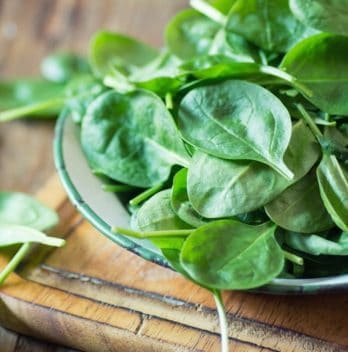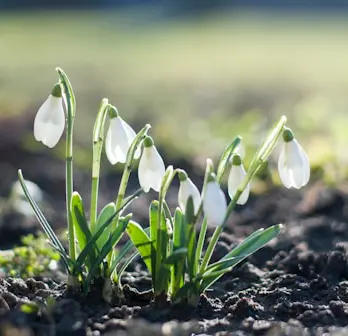Do you know what family spinach belongs to, or do you know it as an annual plant cultivated as a leaf vegetable and loved by many home cooks?
Spinacia oleracea—the spinach botanical name or spinach Latin name—is a much-loved dark leafy vegetable. It has been grown for a long time due to its valued nutritional benefits, which include vitamins A, C, E, and K, fibre, folate, magnesium, and other vital anti-oxidants.
Other species of plants commonly called spinach in different parts of the country include New Zealand spinach, the Tetrogonia expanse in the Aizoaceae family, and mountain spinach Atriplex Hortense in the Amaranthaceae family.
What Family Is Spinach In?
Spinach belongs to the amaranth family – the Amaranthaceae, a flowering plant family with about 160 genera and 2400 species.
The spinach plant family has dark green leaves that are opposite, simple, or alternate, with coarsely toothed margins without stipules. The flowers are aggregated or solitary in cymes, panicles, or spikes and are typically perfect.
The flowers are regular with 4 to 5 petals and are often joined together. They have about 1 to 5 stamens, and their hypogynous ovaries have 3 to 5 joined sepals.

Spinach is an annual plant that grows up to a height of 30 cm. Its leaves are simple, alternate, and ovate to triangular and either curled or flat. The leaves are variable in size, from about 2 to 30 cm long and 1 to 15 cm wide. They have larger leaves at the base of the plant and smaller leaves higher on the flowering stem. The stems are yellow-green, measuring at least 3 to 4 mm in diameter and maturing into a hard, dry, lumpy fruit class stuff about 5 to 10 mm and can contain several seeds.
Spinach requires cool weather for maximum growth and may survive mild winters in temperate regions. It is native to southwestern and central Asia. In the 8th century, the Spaniards cultivated spinach in Spain and brought it to the United States.
Production Marketing And Storage Of The Spinach Family
Spinach is sold in loose bunches, packed in bags, frozen or canned. When stored longer than a few days, fresh spinach loses most of its nutritional value.
Refrigeration may slow this effect to about eight days; however, such will lose most of its folate and carotenoid content. If you want to store it longer, freeze it or preserve it. Keeping it in the freezer can last up to 8 months.
Types Of Spinach Family
There’s a clear distinction between the older varieties of spinach and the more modern varieties currently grown. All the black keys tend to bolt too early in warm conditions, while the newer varieties grow more rapidly with less inclination to seed.
The older varieties have narrower leaves and tend to have a stronger and more bitter taste than the new types with broader leaves and round seeds.
(Bloomsdale Long Standing) – Approx 300 Seeds – USDA Organic, Non-GMO, Open Pollinated, Heirloom,…
There Are Three Basic Types Of Spinach
- Flat or Smooth Leaf Spinach. This variety has broad, smooth leaves that are easier to clean than the Savoy variety. It is best for canning, frozen spinach, baby foods, soups, and processed foods.
- Savoy. This variety has dark green, curly, and wavy leaves. This is the type of spinach sold in fresh bunches in most supermarkets. Due to its curly and crinkly leaves, cleaning all the
soil out is hard and requires special care. Bloomsdale, one of the varieties of Savoy, withstands bolting. - Semi-savoy. This hybrid variety has slightly crinkled leaves and the same texture as Savoy. It cleans easily and grows for both fresh market and processing. One of its varieties, ‘five-stars,’ is widely grown because it has good resistance to seeding.
Other Species Called Spinach
The name spinach applies to many leafy vegetables, both related and unrelated to the original spinach.
- Chard – Beta Vulgaris, Amaranthaceae, is also known as spinach beet or perpetual spinach.
- Good King Henry – chenopodium bonus-Henricus, Amaranthaceae, and other chenopodium species, also called Lincolnshire spinach.
- Orache – Atriplex species Amaranthaceae, also called French or mountain spinach.
- Bayam – In Indonesia, the word bayam applies to a particular species of amaranth commonly eaten as leafy vegetables and two spinach available except in certain supermarkets.
- Sissoo Spinach, also known as Brazilian spinach—alternanthera sissoo—is in the same family as true spinach and is cooked the same way.
- Mountain Spinach, Atriplex Hortensis, is similar to lamb’s quarters and is cultivated as a port hub for its young leaves.

Unrelated Species With Similar Use
Many other species are unrelated to true spinach but similar in flavor and use.
- Longevity Spinach is a vining plant native to the parts of Africa and Asia
- Okinawan Spinach is a large shrub native to East Asia and a member of the Asteraceae.
- Malabar, or Indian Spinach, is a vining plant that can be eaten raw or cooked.
- New Zealand Spinach is a member of the family Aizoaceae. You must blanch it before eating it. It grows as an ornamental plant in most gardens.
- Water Spinach is a member of the Convolvulaceae family and is grown for its tender shoots. It is an invasive species in some wet areas outside its native region.
- Komatsuna, or Japanese mustard spinach, is a hardy-leaf vegetable of the Brassicaceae family.
- Chaya, also known as tree spinach, is native to Central America and belongs to the family of Euphorbiaceae. Its leaves contain dangerous cardiac glycosides, which must be cooked for at least 15 minutes for them to be safe to eat.
Click here to learn about:
Nutritional Information Of Spinach
Spinach has a significant nutritional value, especially when freshly picked from the garden, steamed or quickly boiled.
Spinach is a rich source of vitamins A, C, E, and K, folate, fiber, magnesium, and other vital anti-oxidants. Recent studies have also shown that spinach contains opioid peptides known as rubiscolins.
To benefit from spinach’s folate, it is best to steam it instead of boiling it. Boiling spinach for 4 minutes can decrease the level of folate by half.
Is Spinach High in Fiber?
Spinach is an excellent source of dietary fiber, making it a great addition to a healthy diet. A cup of cooked spinach contains about 4 grams of fiber, which helps regulate digestion and promotes gut health. Fiber in spinach also supports heart health by lowering cholesterol levels and helps maintain stable blood sugar levels. Including fiber-rich foods like spinach can aid in weight management by promoting a feeling of fullness and reducing overeating. Spinach is an easy way to boost your daily fiber intake!
Is Raw Spinach Better Than Cooked?
Both raw and cooked spinach have unique benefits. Raw spinach retains more water-soluble nutrients, such as vitamin C and folate, which can be reduced during cooking. However, cooking spinach enhances the absorption of some nutrients, like iron and calcium, by breaking down oxalates, compounds that block nutrient absorption. Cooking also reduces the volume of spinach, allowing you to consume more nutrients in one serving.
The choice depends on which nutrients you prioritize and your personal preference.
How to Store Spinach
To keep spinach fresh, store it properly in the refrigerator. First, wash and dry the leaves thoroughly. Excess moisture can cause it to wilt, so use a salad spinner or paper towels to remove water. Place the spinach in a breathable container like a plastic bag or container lined with paper towels. Seal it loosely to allow airflow and place it in the crisper drawer of your fridge. Properly stored, spinach can last up to 5-7 days.
For longer storage, consider freezing spinach after blanching.
Conclusion
With an understanding of what family spinach is in and the nutrients it carries along, you can confidently continue drawing whatever variety of spinach you love to provide you with all the above nutrients.
As you have learned above, the best time to consume spinach is fresh from the garden. That’s why we encourage gardeners to keep growing their fresh produce every day for better nutrition.
FAQ: What Family Is Spinach In?
1. What family does spinach belong to?
Spinach is part of the Amaranthaceae family, specifically the subfamily Chenopodioideae.
2. Is spinach related to other leafy greens?
Yes, spinach is related to other greens like beets and Swiss chard, which also belong to the Amaranthaceae family.
3. Are there different types of spinach?
Yes, there are three main types: savoy, semi-savoy, and flat-leaf spinach.
4. Does spinach share characteristics with other plants in its family?
Yes, like beets and quinoa, spinach thrives in cool climates.
5. Can spinach cross-pollinate with other plants in its family?
No, spinach is only cross-pollinated with other spinach plants.

Brian believes the best days are spent outside with soil on your hands. He finds his rhythm in the details of the garden—from carefully tending to established plants to the excitement of propagating new varieties. A true outdoor enthusiast, Brian is here to swap stories, share advice, and celebrate the rewarding work of growing.





